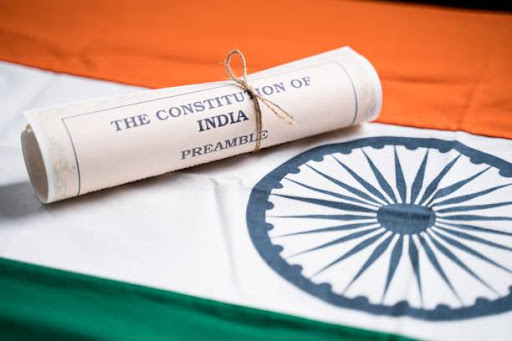The Three Pillars of the Indian Constitution: Driving Growth and Stability
India’s strength as the world’s largest democracy lies in the robust framework provided by its Constitution. At the heart of this framework are three fundamental pillars: Legislation, Executive, and Judiciary. These pillars work collaboratively to ensure the smooth functioning of the nation and uphold the democratic ideals cherished by its citizens. Let’s dive into the intricacies of each pillar, exploring how they operate, their significance, and their contributions to India’s progress.
Legislation: Crafting the Laws That Shape India
The Legislature is the lawmaking arm of the government, responsible for drafting, debating, and enacting laws. It consists of:
- The Parliament: Comprising two houses—the Lok Sabha (House of the People) and Rajya Sabha (Council of States).
- State Legislatures: State-level assemblies with Members of Legislative Assembly (MLAs).
Key Roles of the Legislature
- Lawmaking: The primary role of the Legislature is to formulate laws that regulate social, economic, and political aspects of the country. For instance, laws like the Goods and Services Tax Act (2017) have revolutionized India’s taxation system.
- Representation: Legislators represent their constituencies, ensuring that diverse voices and regional perspectives are included in policymaking.
- Budget Approval: The Parliament approves the Union Budget annually, allocating resources for development and governance.
- Accountability: Legislators hold the Executive accountable through debates, questions, and motions in the Parliament.
A Historic Example
The Right to Information Act (2005), passed by the Indian Parliament, empowers citizens to access government records and promotes transparency. This landmark legislation has transformed governance and made officials more accountable.
In the coming years, the Legislature will play a vital role in shaping policies to address pressing issues like climate change, cybersecurity, and social equality.
Executive: The Implementers of Laws and Policies
The Executive is tasked with implementing laws and policies, ensuring their real-world application. It includes:
- Central Executive: Comprising the President (Head of State), Prime Minister (Head of Government), Council of Ministers, and civil servants.
- State Executive: Governors, Chief Ministers, and state-level bureaucrats.
Key Functions of the Executive
- Policy Implementation: The Executive enforces laws passed by the Legislature, transforming them into actionable programs.
- Administration: It oversees governance across sectors like education, healthcare, defense, and infrastructure.
- Crisis Management: During emergencies such as natural disasters or pandemics, the Executive coordinates relief and response efforts.
- International Relations: It represents India on the global stage, negotiating treaties and fostering diplomatic ties.
A Historic Example
During the COVID-19 pandemic, the Indian government rolled out initiatives like PM CARES Fund and vaccination drives. The Executive’s swift action in distributing relief packages and organizing healthcare services highlighted its importance in crisis management.
In the future, the Executive will spearhead projects related to digitization, green energy, and economic reforms to propel India toward sustainable development.
Judiciary: The Guardians of Justice
The Judiciary interprets laws, resolves disputes, and safeguards citizens’ rights. It ensures that the Constitution remains the guiding framework for governance. The judiciary includes:
- Supreme Court: The apex court of India.
- High Courts: Courts at the state level.
- Lower Courts: District and subordinate courts.
Key Responsibilities of the Judiciary
- Constitutional Oversight: The Judiciary ensures that laws and policies adhere to the principles enshrined in the Constitution.
- Protection of Rights: It acts as a guardian of fundamental rights, including equality, freedom, and justice.
- Dispute Resolution: The Judiciary resolves conflicts between individuals, organizations, and government entities.
- Checks and Balances: It serves as a check on the powers of the Legislature and Executive, preventing misuse or overreach.
A Landmark Judgment
The Kesavananda Bharati Case (1973) marked a turning point in Indian democracy. The Supreme Court introduced the Basic Structure Doctrine, ensuring that the Constitution’s core principles cannot be altered. This judgment safeguarded democratic values and remains a cornerstone of constitutional law.
Moving forward, the Judiciary will play a pivotal role in addressing complex issues like data privacy, environmental conservation, and upholding social justice.
How These Pillars Work Together
While each pillar has distinct roles, their success depends on collaboration:
- The Legislature drafts laws based on public needs.
- The Executive implements these laws and ensures their efficacy.
- The Judiciary interprets and safeguards these laws, ensuring fairness and justice.
A well-coordinated approach among these pillars is essential for tackling challenges such as poverty, corruption, and climate change.
Interesting Examples from the Past
- Emergency Period (1975-1977): During the Emergency declared by the Executive, the Judiciary’s role in safeguarding democratic principles came under scrutiny. While some decisions aligned with the government, later judgments reaffirmed the importance of judicial independence.
- GST Implementation: The Legislature enacted the GST Act, the Executive implemented it across states, and the Judiciary resolved disputes arising during its rollout. This coordination highlights how the pillars work together for economic reform.
Future Vision: Driving India’s Development
India’s growth hinges on the dynamic interplay of these pillars:
- Legislation: Laws addressing emerging challenges like climate change and artificial intelligence can pave the way for sustainable growth.
- Executive: Efficient policy implementation in areas like infrastructure, education, and healthcare will strengthen the economy and improve quality of life.
- Judiciary: Upholding justice, resolving conflicts, and safeguarding rights will ensure a fair and equitable society.
By staying true to their constitutional mandates, these pillars can transform India into a global leader in democracy, development, and innovation.
Conclusion
The three pillars of the Indian Constitution—Legislation, Executive, and Judiciary—are the bedrock of democracy. Each plays a unique and vital role in governance, justice, and development. Together, they ensure the nation’s stability, uphold its values, and drive its progress. As India moves forward, the strength of these pillars will continue to shape its destiny, making it a beacon of hope and inspiration for the world.
Thank you for being a part of this learning journey. Please share if you like it !
Gyaanology Team

Leave a Reply